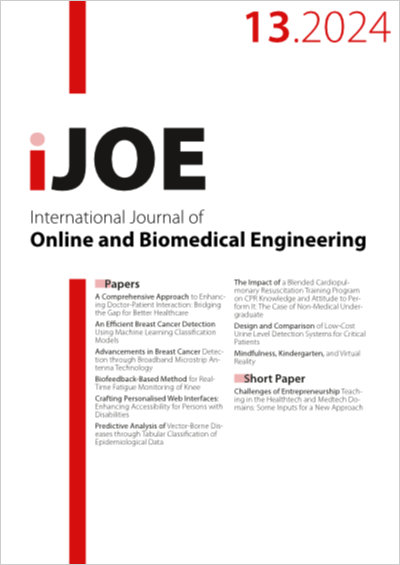The Impact of a Blended Cardiopulmonary Resuscitation Training Program on CPR Knowledge and Attitude to Perform It: The Case of Non-Medical Undergraduate
DOI:
https://doi.org/10.3991/ijoe.v20i13.50335Keywords:
CPR, Blended learning, ATTITUDE, ABC modelAbstract
Blended learning (BL) has recently been extensively utilized as an effective instructional method in the educational field. Despite its benefits, few studies investigate its impact on cardiopulmonary resuscitation (CPR) training programs for non-medical students and staff. The importance of CPR training lies in its contribution to achieving the third sustainable development goal (SDG) by enhancing survival rates. Nevertheless, some obstacles have hindered university students from participating in these courses. This study aims to identify the impact of blended learning, which integrates asynchronous online learning with face-toface instruction, on CPR knowledge and attitudes among non-medical undergraduates. Using a true experimental design, the experimental group (n = 41) received the BL CPR training program while the control group (n = 40) received the convolutional CPR training program. Data were collected using a developed CPR knowledge test and an attitude measure toward performing CPR before and after the program. The analysis of covariance (ANCOVA) analysis at the 5% significance level (p < 0.05) revealed a significant positive influence of the BL method on enhancing students’ CPR knowledge and their attitudes toward performing it. These results recommend that decision-makers employ BL programs to enhance students’ CPR knowledge and attitudes toward performing it.
Downloads
Published
How to Cite
Issue
Section
License
Copyright (c) 2024 Aseel Ajlouni, Reem Abuabbas, Hatem Shlool

This work is licensed under a Creative Commons Attribution 4.0 International License.



